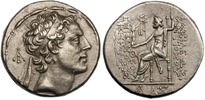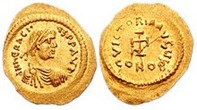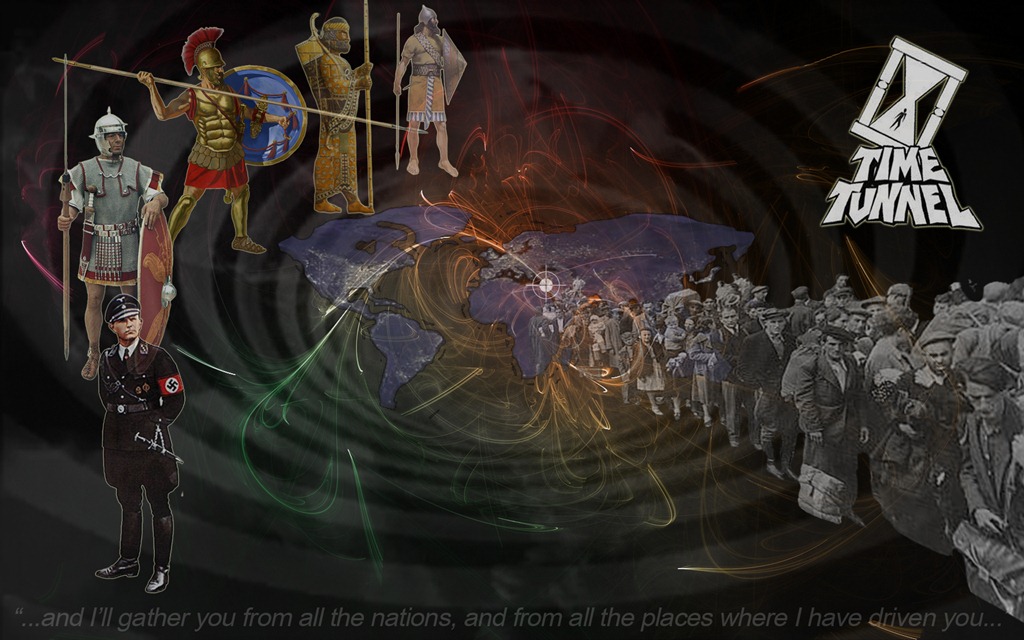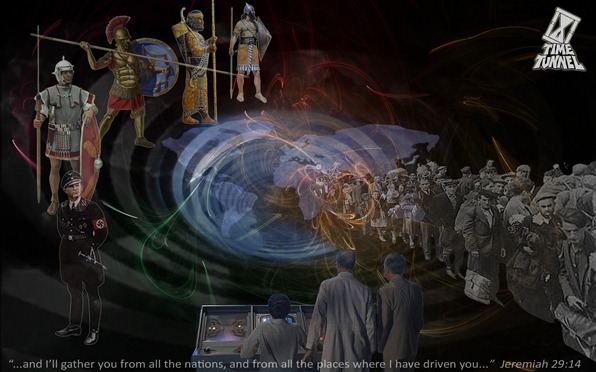Among the most prominent themes in the Hebrew Bible are the concepts of sin, punishment, repentance, and restoration. Chapter 28 of the book of Deuteronomy, known as the “blessing and curse,” makes it abundantly clear what the rules of the game are. Follow the law, and you will enjoy fantastic entrepreneurial success and overflowing prosperity. Disobey it, and you’ll be punished with the worst forms of war, exile, anarchy, and poverty.
The following two promises illustrate the inverse relationship of the biblical punishment and restoration concepts:
Punishment (Deuteronomy 28:64)
…and the LORD shall scatter you among all peoples, from the one end of the earth unto the other end of the earth;
…and there you will serve other gods, which you have not known, nor your fathers, even ones made of wood and stone.
Is offset by:
Restoration (Jeremiah 29:14 and Zechariah Chapter 14:9)
… and I will end your captivity, and gather you from all the nations, and from all the places whither I have driven you, said the LORD.
…and the LORD shall be King over all the earth; in that day shall the LORD be One and His name one.
I chose to use the example of the exile from/return to the Promised Land as an illustration because it seems to have been executed with meticulous precision for over 2700 years. Being a software engineer, I can’t help but look at a promise of punishment and restoration that spans such a long period of time and not see a long-running transaction.
In software design, we use the term ‘long-running transaction’ to describe a job that may need to run for an extended time and survive various failure conditions like system reboots and lack of connectivity. These processes might also have long periods of inactivity between consecutive events, so they just sit and wait for days, weeks, or months at a time.
Keeping this in mind, we can begin our historical tour of one of the longest-running transactions in history and how it unfolded throughout the centuries.
The Jewish mass exiles from the holy land begins in 740 BCE. After repeated threats and prophecies foreshadowing impending doom, the Assyrian king Tiglath-Pileser III, arrives to the Northern Kingdom of Israel and exiles the tribes of Reuben, Gad, and the half of the tribe of Manasseh (I Chronicles 5:26).
 In 722 BCE, it is the turn of Samaria, the capital of the Northern Kingdom. After a three-year siege, Samaria is captured by Sargon II and Shalmaneser V, each of whom, in turn, proceeds to exile first 27,290 inhabitants of Samaria and then ten of the twelve tribes of Israel. Those ten later came to be known as the Ten Lost Tribes. (2 Kings 17:24).
In 722 BCE, it is the turn of Samaria, the capital of the Northern Kingdom. After a three-year siege, Samaria is captured by Sargon II and Shalmaneser V, each of whom, in turn, proceeds to exile first 27,290 inhabitants of Samaria and then ten of the twelve tribes of Israel. Those ten later came to be known as the Ten Lost Tribes. (2 Kings 17:24).
In 701 BCE, twenty years later, Sennacherib leads a military campaign against Judea, which results in the exile of 200,000 Israelites (2 Kings 18:12 and Taylor Prism).
 Now fast-forward the time machine by 100 years, to 597 BCE. The Assyrian Empire had just been replaced by the Babylonian Empire. With new regional management comes a new round of exiles. This time, it’s King Nebuchadnezzar II who is the divine “messenger.” Jerusalem, the capital of Judea, is put under siege and eventually falls, resulting in the destruction of the First Temple in Jerusalem and the exile of 50,000 people to Babylonia (2 Kings 25:21).
Now fast-forward the time machine by 100 years, to 597 BCE. The Assyrian Empire had just been replaced by the Babylonian Empire. With new regional management comes a new round of exiles. This time, it’s King Nebuchadnezzar II who is the divine “messenger.” Jerusalem, the capital of Judea, is put under siege and eventually falls, resulting in the destruction of the First Temple in Jerusalem and the exile of 50,000 people to Babylonia (2 Kings 25:21).
By 520 BCE, only 70 years later, the Babylonian empire has gone the way of all empires and the new superpower, Persia, permits the exiles to return to Judea and rebuild the Second Temple.
 In 334 BCE, it’s the Persian empire’s turn to meets its maker. Judea now falls under the rule of Alexander the Great. By 167 BCE, his empire is broken to there separate kingdoms and one of his successors, the Seleucid king Antiochus IV Epiphanes, pursues a zealous Hellenizing policy against the Jews which leads to the Maccabean Revolt. In the space of three days, 40,000 people are killed in Jerusalem, and the same number is exiled and sold into slavery. (2 Maccabees 5:11–14).
In 334 BCE, it’s the Persian empire’s turn to meets its maker. Judea now falls under the rule of Alexander the Great. By 167 BCE, his empire is broken to there separate kingdoms and one of his successors, the Seleucid king Antiochus IV Epiphanes, pursues a zealous Hellenizing policy against the Jews which leads to the Maccabean Revolt. In the space of three days, 40,000 people are killed in Jerusalem, and the same number is exiled and sold into slavery. (2 Maccabees 5:11–14).
By 6 CE, the Seleucid empire went up in smoke, and Judea became a province of the Roman Empire. In 66 CE, due to a combination of religious and political factors, a full-blown revolt is launched against Rome. This war, known as the First Jewish–Roman War, lasts for about 7 years and ends in the destruction of Jerusalem and the Second Temple. According to Josephus, around 1,000,000 people are killed, and as many as 100,000 are exiled and sold into slavery. The exiled slaves and gold that was stolen from the temple finances major public works in Rome, including the Colosseum.
Through their iron fist policy, the Romans keep Judea quiet for another 40 years. Then in 115 CE, the Second Jewish-Roman War breaks out. Known as the Kitos War or the rebellion of the diaspora, the war lasts for about two years and resulted in the depopulation of many Jewish communities in places like Cyprus, Cyrene (modern-day Libya), Alexandria, and thousands of exiles.
 Pax Romana works for another 15 years. Then in 132 CE, the emperor Hadrian decides to rename Jerusalem “Aelia Capitolina” and to prohibit circumcision. This leads to the Third Jewish-Roman War, also known as the Bar Kokhba Revolt. The war lasts for 4 years. The outcome is almost the complete devastation of Jewish life in Judea. According to the Roman historian Cassius Dio, 580,000 Jews were killed and thousands exiled.
Pax Romana works for another 15 years. Then in 132 CE, the emperor Hadrian decides to rename Jerusalem “Aelia Capitolina” and to prohibit circumcision. This leads to the Third Jewish-Roman War, also known as the Bar Kokhba Revolt. The war lasts for 4 years. The outcome is almost the complete devastation of Jewish life in Judea. According to the Roman historian Cassius Dio, 580,000 Jews were killed and thousands exiled.
In a final attempt to suppress any future Jewish revolts, Hadrian burns the Torah scrolls at the former Temple sanctuary and places two statues there: one of Jupiter and one of himself.  To eradicate any memory of Judea or Israel, he also wipes the name “Judea” off the official Roman maps and replaces it with “Syria Palaestina” (after the Philistines).
To eradicate any memory of Judea or Israel, he also wipes the name “Judea” off the official Roman maps and replaces it with “Syria Palaestina” (after the Philistines).
This strategy works for about 120 years. Then in 351 CE, a revolt brakes out against emperor Gallus. After a short war, Tiberias, Diospolis, and Diocaesarea, the centers of the rebellion, are razed to the ground. Ursicinus, the Roman general in charge, orders thousands to be killed, enslaved, and exiled.
260 years passes, and the empire is now under Byzantine management when a Jewish revolt  brakes out against emperor Heraclius. The war ends in about 626 and is followed by a wide-scale massacre of the Jewish population throughout Jerusalem and Galilee and the exile of tens of thousands.
brakes out against emperor Heraclius. The war ends in about 626 and is followed by a wide-scale massacre of the Jewish population throughout Jerusalem and Galilee and the exile of tens of thousands.
By 628 CE, it’s the end of the road for the Byzantine empire. The Jewish population in Judea under Muslims rule continues to shrink for about 400 years and eventually in 1099 CE, culminates in the Crusades during which most of the Jewish population left in the land is either killed or exiled.
This pattern continues during the Middle Ages, Renaissance, and up until as late as the 20th century. Some of the expulsions are massive, such as the one in Spain in 1492 that effects 800,000 people. Others are smaller and impact a single city or several hundred individuals. But nevertheless, The Jewish communities everywhere were constantly involuntarily on the move.
A quick sampling of European expulsions between 1495 and 1597 shows 23 such events.
1495 Lithuania
1497 Portugal
1499 Germany
1510 Brandenburg, Germany
1510 Naples
1514 Strasbourg
1519 Ratisbon [Regensburg in Germany]
1527 Florence
1535 After Spanish troops capture Tunis, all the local Jews are sold into slavery
1540 Naples
1542 Bohemia
1550 Genoa
1551 Bavaria
1551 Pesaro
1559 Austria
1561 Prague
1564 Brest-Litovsk
1567 Würzburg [Bavaria]
1569 All Papal Territory except Rome and Ancona
1593 Brandenburg, Austria
1597 Cremona
1597 Pavia
1597 Lodi
Between 1941 and 1945, across German-occupied Europe, the Nazis, aided by local collaborators, systematically murdered over six million Jews, around two-thirds of Europe’s Jewish population. The murders were carried out in pogroms and mass shootings, by a policy of extermination through labor in concentration camps, and in gas chambers and gas vans in German extermination camps.
By 1947, 2700 years have passed since the first Assyrian exile. The original prophesy in Deuteronomy 28:64 of “I’ll scatter you among all people… from the one end of the earth unto the other end of the earth” has now been fulfilled.
So, you are probably thinking to yourself: “This history of exiles and expulsions is interesting, but where is the proof of the inverse prophesy?” (Remember? The one about gathering the exiles from the far reaches of the earth and bringing them back to Zion and the universal recognition of the one nature of G-d).
In what looks like the self-reassembly scene from the Iron Giant, over the past 130 years, the descendants of the exiles are finally starting to make their way back home. By 1948, against all the odds, the State of Israel is re-established, the land is reclaimed, and Hebrew, as a spoken language is resurrected. Furthermore, consider the stories of some of the returning exiles, a remote and what are apparently completely unrelated groups like: Beta Israel, Bnei Menashe, Bene Ephraim, Bene Israel, Pashtun, ye-Ityoppya Ayhudi, Bakwa Dishi, The Lemba people, and Kaifeng. All of these have oral traditions that claim that they are the descendants of the Judean exiles or the ten lost tribes.
What about the universal recognition of the “one nature of G-d” prophesy? This one takes the cake! Check out the video below, which was recorded in a remote village in Papua New Guinea. It shows the native community reciting one of the oldest biblical affirmation prayers about the unity of G-d.
The words for this song come from the text found in Deuteronomy 6:4:
Hear, O Israel: the LORD our G-d, the LORD is one
For Jews, it is considered the single most important passage in the Hebrew Bible, and it has been recited as part of the daily prayer routine for over 3,000 years, long before the first exile ever took place.
G-d bless the people of Papua New Guinea!
References and Sources
Operation Yakhin
Operation Mural
Operation Ezra and Nehemiah
Operation Magic Carpet
Operation Solomon
Operation Joshua
Operation Moses
Deuteronomy 4:34
”…has any god ever attempted to go and take a nation for himself from the midst of another nation, by trials, by signs, by wonders, and by war, by a mighty hand and an outstretched arm, and by great deeds of terror, all of which the Lord your God did for you…?”
© Copyright 2011 Yaacov Apelbaum All Rights Reserved.



The ancients did the Jews the greatest favor by persecuting them: they created martyrs and re-enforced their “separateness” and identity which has made their culture and religion stronger and more resilient than it would have been. (As Nassim Nicholas Taleb would say, Jews are “anti-fragile”.)
Thanks for the comment Will,
I think that you are right in one regard: being forced to march for several thousand years puts a lot of calluses on your feet!. At the same time Mark Twain observed that:
“The Egyptian, the Babylonian, and the Persian rose, filled the planet with sound and splendor, then faded to dream-stuff and passed away; the Greek and the Roman followed, and made a vast noise, and they are gone; other peoples have sprung up and held their torch high for a time, but it burned out, and they sit in twilight now, or have vanished. The Jew saw them all, beat them all, and is now what he always was, exhibiting no decadence, no infirmities of age, no weakening of his parts, no slowing of his energies, no dulling of his alert and aggressive mind. All things are mortal but the Jew; all other forces pass, but he remains. What is the secret of his immortality?”
This is true only if you buy into the prophetic concept of exile being a form of a punishment that has a beginning and an end. Otherwise, within several generations, the latest dominant culture always wins and all “old empires” eventually disappear.
The biblical view of history is that in some ways it is like the game of Jumanji. You may make a bad move—like when you break the commandments—and get sent to the jungle for 2700 years. To spice things up a bit you also may have your homeland destroyed, renamed, and occupied by different people and religions. But rest assured, at some point when the timer runs its course, you’ll get back in the game, continuing where you left off.
Fascinating post – seeing history through the eyes of a software engineer ! I love your fourth paragraph where you draw the parallel. What an amazing historic story of the people of God – what an amazing God ! And who can know His mind, except you read the Word of God, the Bible.
Well done.
Thank you for your kind words. God bless!